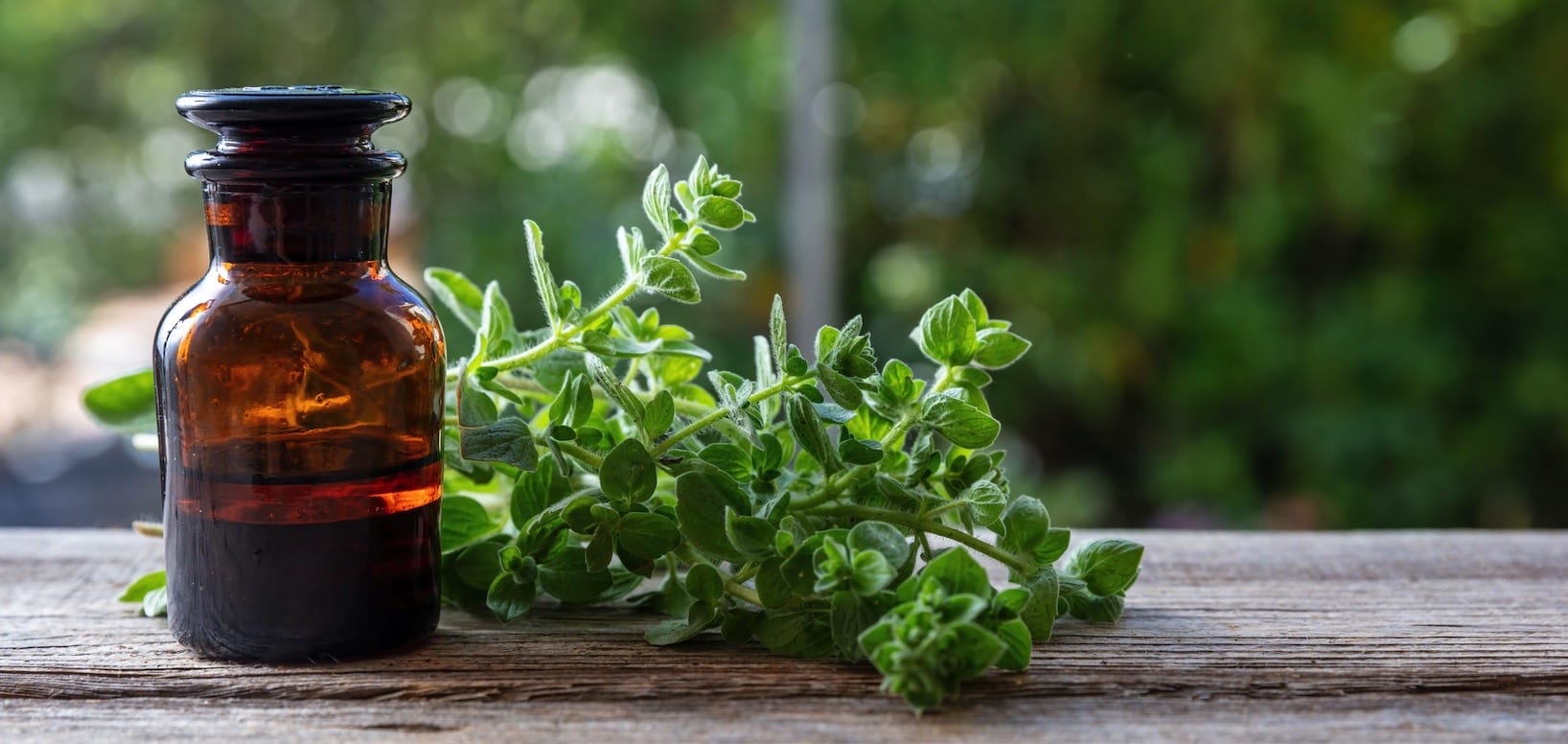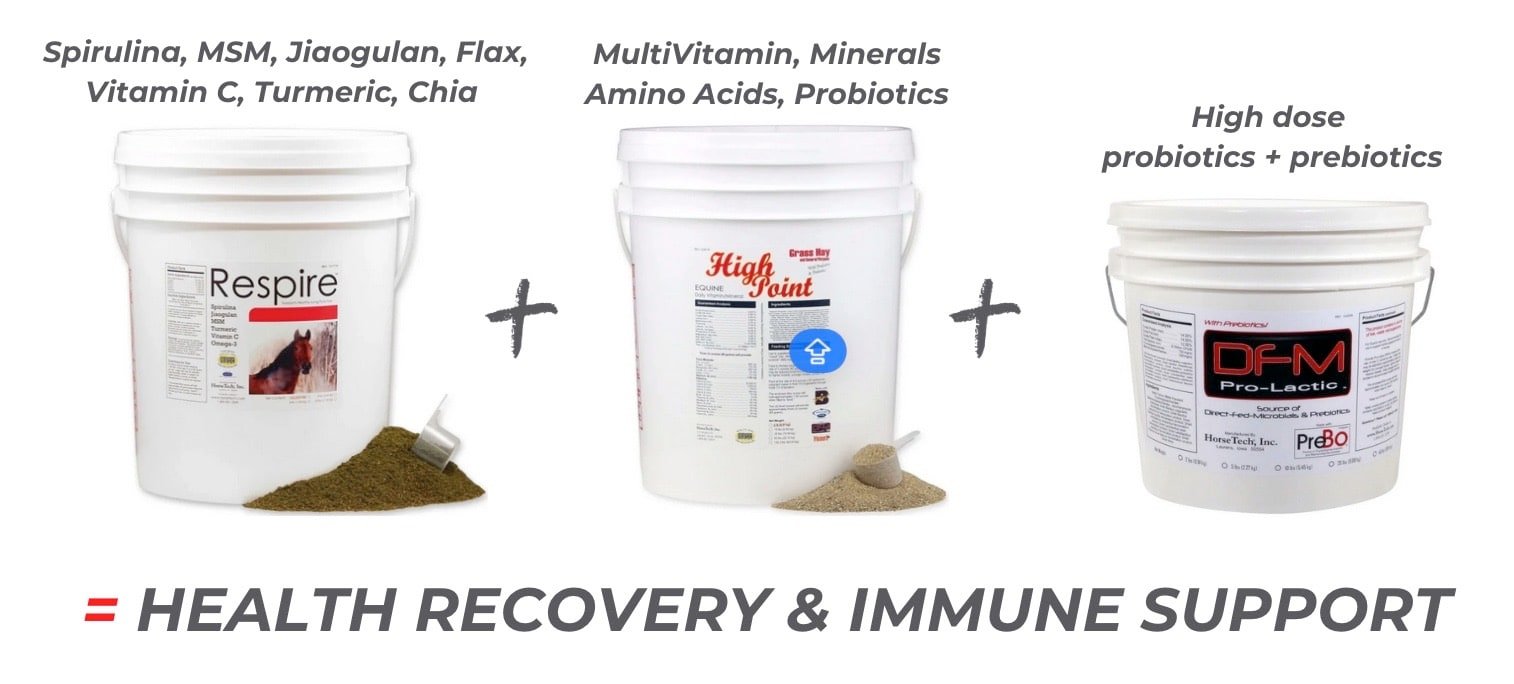What are the natural treatment options if a horse has a sudden, or chronic, runny nose with thick or stinky discharge? Clear mucus or fluid discharge from the nose after exercise, or grazing at certain times of year, is normal. It’s when you see blood, pus, thick mucus, or a foul smell that you should take notice.
Are there any natural alternatives to drug antibiotics, diagnostics like endoscope, radiograph, CT scan, MRI, or drilling a small hole through the facial bones to access the sinuses for irrigation/flushing?
Well you guys just keep the questions coming! This article is the result of a question one of our horse listeners emailed me, about her horse with a chronic runny nose on one side only, with thick, white, smelly discharge:
“Hi! My senior horse Johnny (we have discussed him before) has a chronic one-sided runny nose (thick, white) with odor. Dental check is normal, no infected teeth but he has had several extractions before. I wanted to know what you recommend. I have given him Respire for over a year, but I was thinking of trying wild oregano oil. Not sure how I would administer and dose it. Thank you! He will eat anything by the way.”
So, as per usual, being that I am not a vet, or certified health professional of any kind, I cannot tell you what to do, nor give you advice on how to treat your horse. I can only share my personal opinion on what I would do, if this were my horse.
Okay, so if one of my horses had this issue, the first thing I would want to know is where are the sinus cavities on a horse? This article has some detailed pictures, including this one:

But I also encourage you to read that article to find out what veterinary treatment for an equine sinus infection might involve, along with other complications (like tumours) that may be causing the discharge.
Regardless of cause, my opinion is that the vet treatments will always be available, so I prefer to try kinder, gentler methods first. Methods that engage the horse’s own body wisdom and innate healing ability.
My combined vet bill for 11 horses over the last 8 years is less than $1000 (not including castration). Because I prefer to spend my money on supplements, probiotics, bodywork, and the best hay (low-sugar and 1st cut in slow feeders, so the coarser stem allows them to file their own teeth). Nutrition is medicine.
What Would I do if my Horse had a Sinus Infection?
If my horse had a sinus or nasal cavity infection – as evidenced by thick, stinky discharge – then I would consider that the pathogen could be bacterial or fungal, possibly viral. So I would want to use substances that address all possibilities.
Wild oregano oil is potent against all three, and is also anti-parasitic to a certain extent. How powerful is it? It was as effective as Vancomycin (antibiotic used for superbugs) in a research trial.
Topical & Syringed Treatments for Equine Sinus Infection
However, wild oregano oil also presents as “spicy hot” for the first 2.5 minutes, then the sensation disappears. I have flushed my own sinuses with wild oregano (using a neti pot) and I suspect that if I were a horse, I might let you do it once, but you likely wouldn’t get me to cooperate a second time!
So if I were syringing an anti-pathogen up into the nasal cavities, I would use colloidal silver (minimum 22 ppm).
Colloidal Silver
I would see if my horse tolerated syringing colloidal silver up into the nasal passage and I would do it daily if permitted, until no longer needed. I would expect to see a positive change after 4 days. The first time, if my horse permitted multiple flushes, then I would try to flush it clear of all discharge.
I have used colloidal silver for eye infections in both horses and dogs so I know it works well. I used it on myself when I was cleaning a water trough a horse had pooped in, and the poopy water splashed into my eye. I flushed it well with colloidal silver and suffered no negative consequences.
Wild Oregano Oil
And then I would simultaneously use diluted wild oregano oil topically – right on top of the sinus cavities shown in the photo above. BUT being very careful to leave 1/4-1/2″ gap around the eye area. Oil migrates and I would not want it to seep into my horse’s eyes (would sting the eyes and may cause horse to decline subsequent treatment). I would use a 4:1 dilution of wild oregano (4 parts extra-virgin organic olive oil, to 1 part wild oregano oil) for this topical application.
I would also apply a 7:1 dilution of wild oregano (7 parts extra-virgin organic olive oil, to 1 part wild oregano oil) inside the lining of his nostrils. Inhaling the vapor will be helpful and the active ingredients will enter the bloodstream quickly via the mucous membranes of the nose.
If he tolerates the topical application, then I may also try syringing a 7:1 dilution of wild oregano (7 parts extra-virgin organic olive oil, to 1 part wild oregano oil) into the nasal passage. Especially if my horse seemed okay with syringing/flushing with colloidal silver, then he will likely tolerate the diluted wild oregano, which is a much stronger anti-pathogen.
If you purchase the wild oregano 4-pack from my shoppe, you also receive my free ebook on how to prepare the wild oregano dilutions, along with instructions for various other remedies commonly needed for natural horse care. Also on that shoppe page is my video showing you how I make and use the wild oregano remedies for my horses and dogs, so be sure and check that out for ideas.
Eucalyptus Oil
I would also rub Eucalyptus oil (dilute essential oil with olive oil) or Olbas Oil on my forearm and hold it up to the horse’s nose – let the horse choose the distance – and see if he wishes to inhale the vapors. If he does, then I could saturate a cotton flannel with eucalyptus oil tied somewhere he can easily reach it and breathe in the vapors ongoing.
If my horse were in a stall, I could also set up a eucalyptus steam or cold humidifier and let it run for 4-6 hours – I would watch how he responds and then I’d know whether he wants me to keep running it, or for how long.
Support the Immune System & Gut
The other crucial component when treating any kind of infection, is to support the entire body, and especially the immune system. Since the majority of the immune system is located in the gut, that means high dose probiotics as well.
So my reader is doing great having her horse on Respire – no doubt this has helped keep the infection from progressing or spreading. But to actually eradicate infection, I would not only treat the area directly (syringing and topical treatment as outlined above), I would also be proactive with gut and whole-body health.
These are the supplements I would feed daily until the infection is gone, and then for a full 6 months afterwards. After that I would drop to every other day, or 3x/week if my horse was out on good pasture (free to forage at least 20 different plants) with a companion or herd (horses must have horse relationships to be healthy).
 Here’s what each of these supplements does and why I would use them:
Here’s what each of these supplements does and why I would use them:
Respire – This is the ideal supplement for the immune system, respiratory support, bloodflow (even in the hoof capsule) and comes with a nice base of Omega-3 provided by chia and micro-milled flax. The flax and chia also support intestinal motility and gut health. Learn more here and be sure to read the JINI SAYS section as well.
HighPoint MultiVitamin/Mineral, Aminos – Horses that are fed primarily on grass or hay are not receiving the full panel of essential amino acids. They are also not receiving the variety of nutrients that would be provided by foraging 25-30 different plants per day (what wild horses normally consume). HighPoint makes up for all that’s missing, plus has a good dose of probiotics. Available in powder form, or pellet form, and be sure to read the JINI SAYS section as well.
DFM Probiotics – This probiotic is purely high dose probiotics and prebiotics (food to nourish the good bacteria). You are already getting micro-milled flax (prevents rancidity) and chia in Respire, so you don’t need it in your probiotics and instead can have the highest dosage (50 billion cfu) per serving. Learn more here and be sure to read the JINI SAYS section as well.
Well, I hope that helps! And feel free to post any questions, or share your own experiences below.
If you have a treatment or remedy that has worked well for your horse, please share it with us in as much detail as you can 🙂

Jini Patel Thompson is a natural health writer and Lazer Tapping instructor. She began riding at age 2 in Kenya, and got her first horse at age 8 in Alberta, and so continues a life-long journey and love affair with these amazing creatures.











I’ve got one horse breathing harder than the other two. We’ve given Sulfa for 7 days and Dex for 7 days. Now he’s on low dose Dex and Antihistamines, but not super better, still breathing harder then the others, is there anything natural we can give him? Vet said one lung has fluid in it, but slow improvement. Been three weeks.
Hi Kelly, I’m assuming you’ve assessed his environment for irritants like mold, excessive dust? Also that his hay is unsprayed and no drying agents used? Perhaps you’ve tried soaking his hay first?
Otherwise, I would feed this supplement:
https://shoppe.listentoyourhorse.com/en-ca/products/respire-spirulina-msm-jiaogulan-turmeric
I would also rub Olbas Oil or Eucalyptus oil (dilute essential oil with olive oil) on your forearm and hold it up to his nose – let him choose the distance – and see if he wishes to inhale the vapors. If he does, then you could also set up a eucalyptus steam or cold steam if he’s stalled and let it run for 4-6 hours – watch how he responds and you’ll know whether he wants you to keep running it, or for how long.
You can also use the wild oregano and colloidal silver as outlined in the post.
Hope that helps!